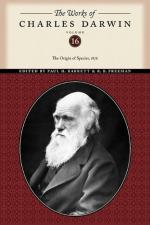We can understand how the spreading of the dominant forms of life, which are those that oftenest vary, will in the long run tend to people the world with allied, but modified, descendants; and these will generally succeed in taking the places of those groups of species which are their inferiors in the struggle for existence. Hence, after long intervals of time, the productions of the world will appear to have changed simultaneously.
We can understand how it is that all the forms of life, ancient and recent, make together one grand system; for all are connected by generation. We can understand, from the continued tendency to divergence of character, why the more ancient a form is, the more it generally differs from those now living. Why ancient and extinct forms often tend to fill up gaps between existing forms, sometimes blending two groups previously classed as distinct into one; but more commonly only bringing them a little closer together. The more ancient a form is, the more often, apparently, it displays characters in some degree intermediate between groups now distinct; for the more ancient a form is, the more nearly it will be related to, and consequently resemble, the common progenitor of groups, since become widely divergent. Extinct forms are seldom directly intermediate between existing forms; but are intermediate only by a long and circuitous course through many extinct and very different forms. We can clearly see why the organic remains of closely consecutive formations are more closely allied to each other, than are those of remote formations; for the forms are more closely linked together by generation: we can clearly see why the remains of an intermediate formation are intermediate in character.
The inhabitants of each successive period in the world’s history have beaten their predecessors in the race for life, and are, in so far, higher in the scale of nature; and this may account for that vague yet ill-defined sentiment, felt by many palaeontologists, that organisation on the whole has progressed. If it should hereafter be proved that ancient animals resemble to a certain extent the embryos of more recent animals of the same class, the fact will be intelligible. The succession of the same types of structure within the same areas during the later geological periods ceases to be mysterious, and is simply explained by inheritance.




